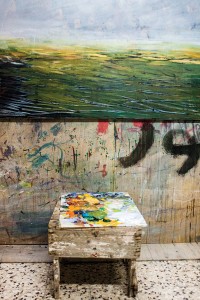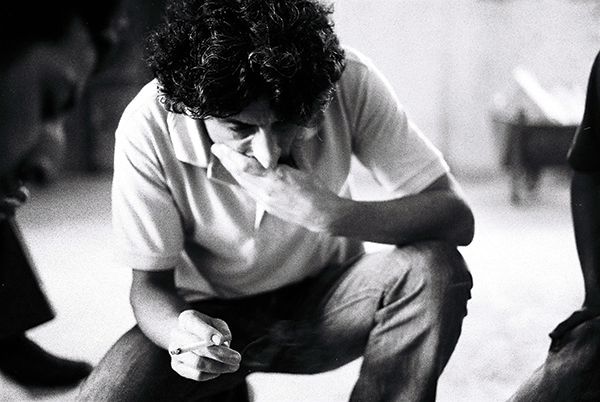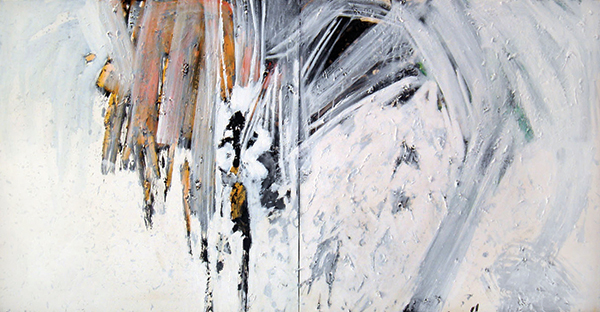Courtesy of Julie Pronier
Fully connected to his environment and the people who surround him, Palestinian artist Rafat Asad opens with each of his productions a new and intimate window onto Palestine’s landscape.
Born in Nablus in 1974, Rafat obtained a BA in fine arts from An-Najah University in 1998. Although he mainly focuses on paintings, he explores other forms of expression through light and sound installations, videos, and performances. His work has been shown in group exhibitions in Palestine, Cuba, Europe, Japan, the United States, and the Arab world, as well as in three solo exhibitions in Nablus, Ramallah, and London.
His art is that of an insatiable observer and lover of everyday life’s details and changes. Rafat forces people to pay attention to the most trivial aspects of their daily lives, their intimate relationships with their city and country.
“The la ndscape and my relation to it is the main concept I’ve worked with since I started painting. When I was a child, I played with mud. I moved to the garden, discovering colors and textures. When my [first solo] exhibition opened, the feeling was different because, at that moment, political issues entered my work. I started to feel as though I were part of the landscape, the settlements, and the wall, and I connected with the relationship of Palestinians to their environment.”
 Rafat’s work brings a unique view of Palestine’s fragmentation and of the people’s disconnections due to the Israeli occupation, as in Absence, a light installation (2004): “We as Palestinians always suffer from this case of “Obligatory Absence” that is made tangible through checkpoints that prevent us from communicating with the other. In this work, I tried to restore my missing human persons and things by drawing their shadows on the walls. This restoration was a temporary and imaginary re-appearance through light and shade.”
Rafat’s work brings a unique view of Palestine’s fragmentation and of the people’s disconnections due to the Israeli occupation, as in Absence, a light installation (2004): “We as Palestinians always suffer from this case of “Obligatory Absence” that is made tangible through checkpoints that prevent us from communicating with the other. In this work, I tried to restore my missing human persons and things by drawing their shadows on the walls. This restoration was a temporary and imaginary re-appearance through light and shade.”
The absence and fragmentation of the Palestinian environment is also visible in Journey, 2009, this time focusing on Jerusalem: “For me, the city of Jerusalem is a lost city. Despite all my efforts, I was only allowed to visit the city once as a kid. Thus, in my reality, Jerusalem is very far away despite its physical proximity; but it is much closer in my dreams and fantasy. Journey creates an airport billboard with ‘Jerusalem’ as a possible destination. In doing so it speaks of both my personal dislocation and the dislocation of the place.”
Rafat is now preparing a new exhibition that is set to open on April 25 at Zawieh Gallery in Ramallah. The series is called Marj Bin Amer, named for a field not far from Jenin that is now cut by the Green Line. Rafat’s landscapes, even though inspired by this area, let the viewer’s imagination run wild, balancing between fiction and reality.
“It’s neither abstract nor realistic, it’s in between. It’s a dialogue between the landscape and me. It doesn’t go into details. It is open to the imagination. (…). It’s like an open book, you can add anything to it (…). It’s a base for the audience to start with their own feelings.”



